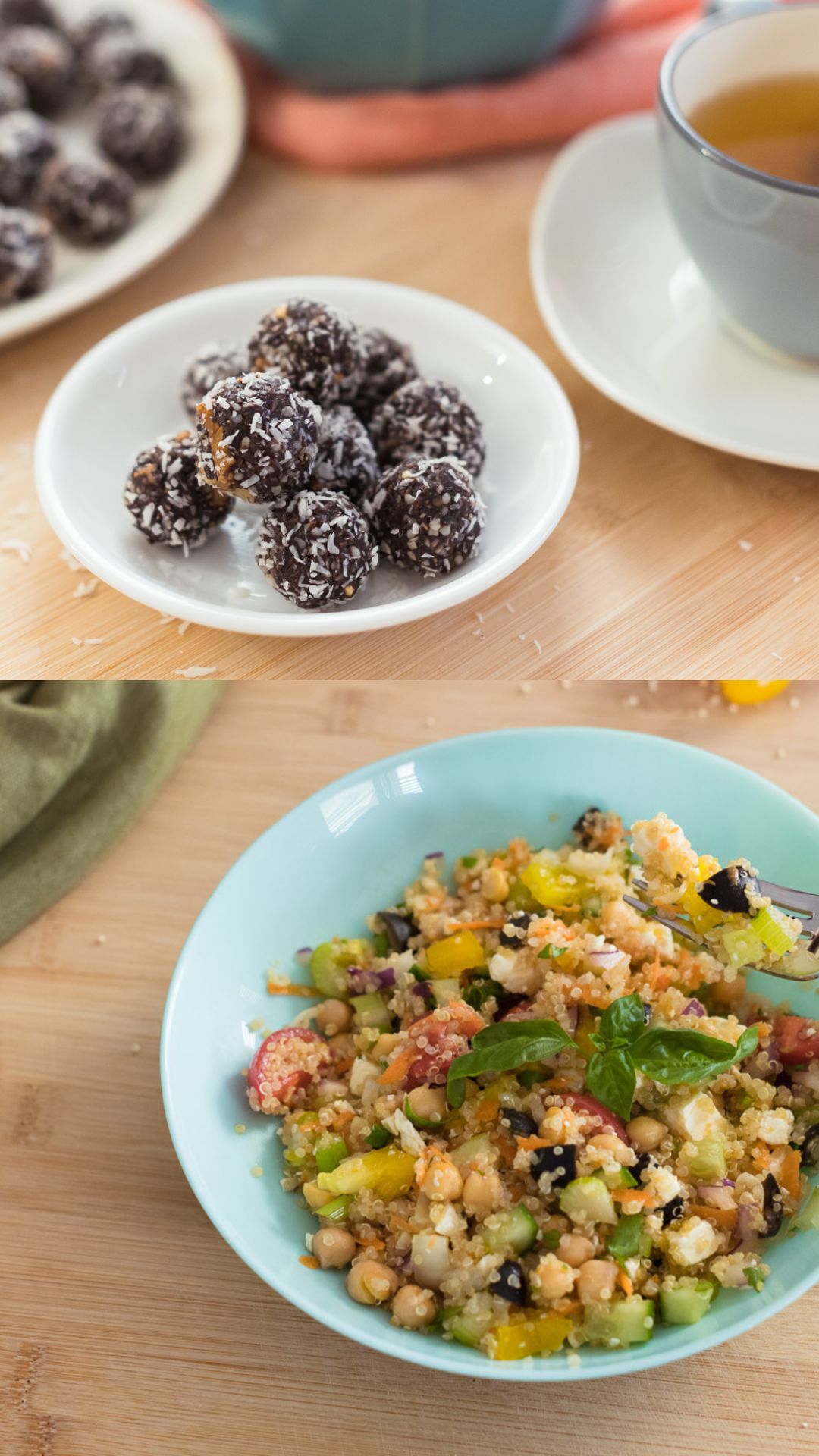Meal planning on a budget is an important skill that helps my family eat healthy and save time and money. Balancing a tight budget while preparing nutritious meals may seem challenging, but with careful planning and a dash of creativity, you too can successfully navigate these waters.
Are you trying to save money on your grocery bill, but don’t want to skimp on nutrition? Then you might find that planning your meals for the week will help you achieve both goals.
These are 10 tips that help me successfully plan my meals and save money.
1. Set your goals
Before diving into meal planning, set clear financial goals. Identify how much money you want to allocate for groceries each week. This step will help you stay focused and make decisions more clearly.
You don’t have to set an exact amount. An estimate will help you stay flexible and not put too much pressure on yourself.
2. Plan Your Weekly Menu
Create a weekly menu by involving your family members in the decision-making process. This will not only foster a sense of ownership, but also ensure that everyone is heard and their preferences are included.
Make sure to incorporate a variety of whole foods such as fruits, vegetables, proteins and healthy fats.
Choose seasonal produce, as it usually is more affordable and fresh.
Try to make your meal plan based on ingredients that are on sale online, in flyers or store coupons. Compare prices and use loyalty programs to save extra money.
Prioritize staples such as rice, pasta, beans and frozen vegetables, as they are cost-effective and have a long shelf life.
3. Reduce Food Waste
Minimize food waste by looking for the expiry date of the ingredients you already have in your pantry or fridge and by planning your meals based on them.
Try to avoid recipes that need a special ingredient. It may not be worth the money to buy an ingredient if you are going to use it only once. Leave the ingredient out or substitute it with a similar one.
4. Incorporate Meatless Meals
Including vegetarian or vegan meals in your weekly menu can significantly reduce your grocery bill. Plant-based proteins like quinoa, lentils, beans and tofu are excellent sources of nutrition and often cost less than animal-based proteins. Have fun exploring recipes that are flavorful and kid-friendly to ensure everyone enjoys the meal.
Like this vegetarian lentil bean medley chili which is a vegetable-packed, soul-warming recipe that is both healthy and delicious. It’s incredibly easy to make and you can enjoy it any day of the week.
5. Make a Grocery List
With your weekly menu in hand, make a grocery list. Stick to the list when you go to the store to avoid impulse purchases that can strain your budget.
I like to order groceries online and choose a pick-up day and time. All I have to do is to then drive to the store (after I drop off my kids to school) and wait for a store employee to bring my order to the car. This way, I avoid going into the store and getting charmed by all the colorful products which, although not needed, might land into my shopping cart.
Some stores also offer home delivery. But I avoid this service as it tends to be more expensive.
6. Shop Smart
To make the most of your budget, consider shopping at bulk stores or local farmers’ markets where prices tend to be lower. You can also consider buying certain items in bulk, especially if they are on sale.
Stay in the know
Join our community of healthy eaters and receive exclusive resources to help you plan your meals like a pro! Sign up today to get a free meal-planning template, along with expert tips on how to make meal planning work for you.
Plus, you’ll also receive our weekly Health and Yum newsletters featuring healthy and easy recipes, as well as helpful tips to support your healthy lifestyle.
7. Embrace Batch Cooking
Batch cooking is a lifesaver when it comes to meal planning. Dedicate a few hours every week to prepare large batches of staple ingredients that can be transformed into multiple meals throughout the week, saving both time and money. Soups, lasagna, chili, curries, stews, pasta sauces are all great options to make big batches of and freeze some to enjoy at a later time.
This homemade tomato soup recipe freezes well and can keep for up to 3 months in the freezer. It’s easy to make a double or triple batch, enjoy some of it fresh and store the leftovers in the freezer to eat later, when you are short on time and can’t spend a lot of time in the kitchen.
This simple and flavorful sausage cabbage soup is also amazing for leftovers. It’s also a beautiful and nutritious meal loaded with fiber.
8. Get Creative with Snacks and Lunches
Purchasing pre-packaged snacks or individual-sized portions can quickly drain your budget. Prepare homemade snacks and portion them out in reusable containers instead.
These no-bake energy bites are made with a combo of protein, healthy fats, complex carbohydrates and fiber. They are not only delicious, but also very nutritious. Even more, they boost brain health and are portable. If you have a busy day ahead, take a few with you to keep your energy up and to avoid fast food.
Pack lunches by using leftovers or by preparing simple, yet nutritious meals like sandwiches, wraps or salads.
Quinoa salad is one of my favourite meals when it comes to meal prep. I pack it in mason jars and we eat it for a few days in a row. Bonus points: it’s packed with veggies, colorful and delicious.
9. Teach Children About Healthy Eating
Involve your children in meal planning, grocery shopping and cooking. Educate them about the importance of balanced nutrition and the value of making conscious choices. Engage them in age-appropriate activities, such as growing a small herb garden or trying quick and easy recipes together.
This refreshing and nutritious chicken salad is the perfect summer dish to make with kids. It’s packed with protein, thanks to the juicy chicken breast and crunchy pecans. It’s bursting with flavor from the tangy lemon dressing that combines the zing of Dijon mustard and lemon juice with the creaminess of mayo. It’s also perfect for meal prep as it can be stored in the fridge for one or two days without losing its taste
10. Evaluate and Adapt
Regularly evaluate your meal planning strategy to identify areas where you can make improvements. Keep track of expenses, recipe successes and family favorites. Over time, you’ll become more efficient at creating budget-friendly, health-conscious meal plans that match your family’s unique needs.
A meal plan is not meant to deprive you of the foods you love. It’s not meant to have you eat rice and beans every week, although this is a good way to stay on budget. A well-balanced meal plan is meant to help you save money and time, while making sure that you and your family enjoy nutritious meals.
If you are new to meal planning or you want a quick refresh, check out this article that includes a step-by-step guide that helps you become a pro at meal planning.
Happy Meal Planning!
Please feel free to leave a comment below or get in touch if you have any questions. I’m always happy to help and answer all your questions!
To your health!











